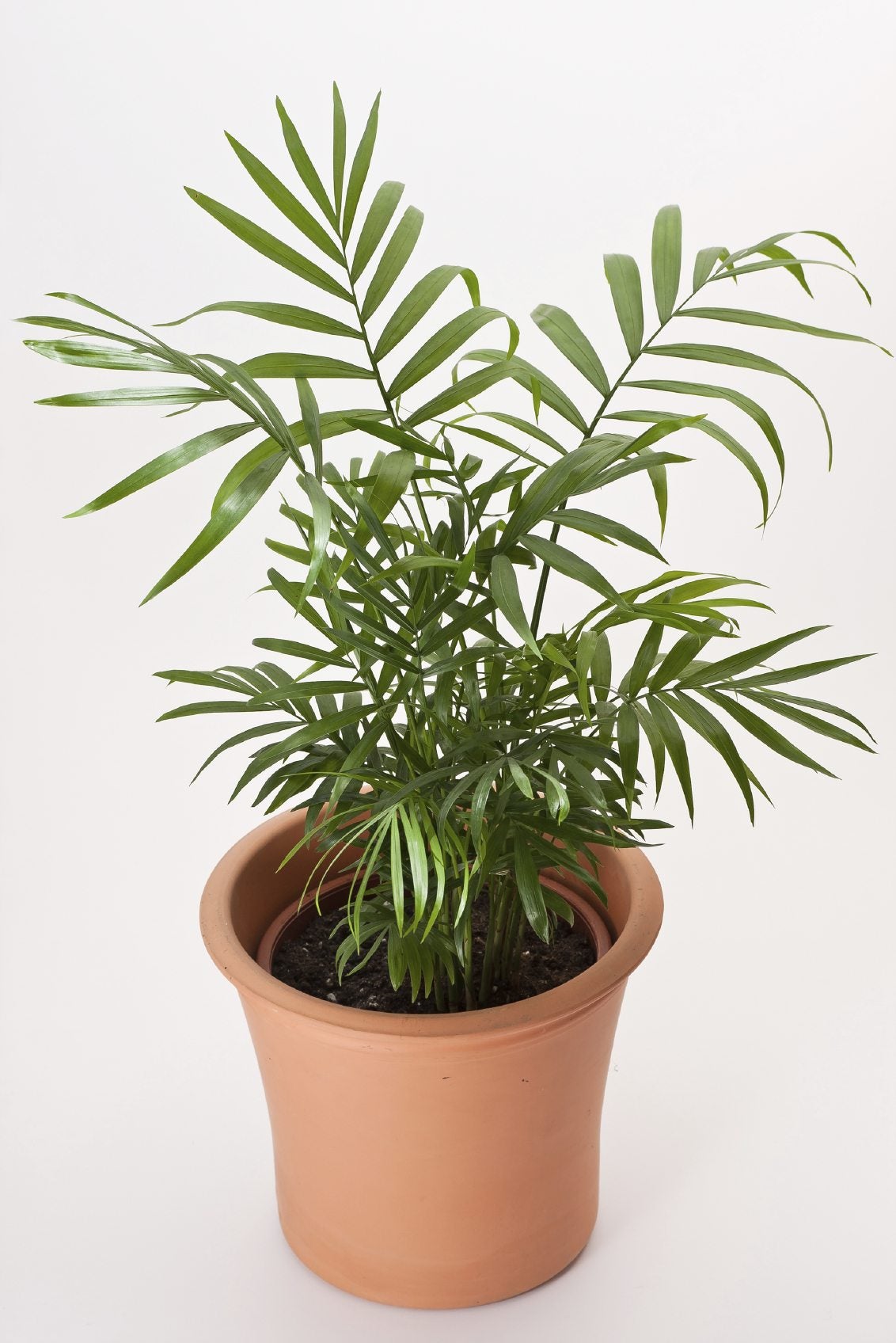Parlor Palm Houseplants: How To Care For A Parlor Palm Plant
The old-fashioned easy-to-grow parlor palm makes a lovely, dramatic statement in low-light conditions or shady outdoor spots.

How To Grow and Care For a Parlor Palm
A popular houseplant since the Victorian Era, the Chamaedorea parlor palm plant still reigns supreme in indoor environments such as malls, offices and homes. As an indoor parlor palm, the typical low light conditions and low to moderate humidity of these environments are perfect for this palm although it may also be grown outside as a shaded specimen plant in USDA zones 10-12. Care for parlor palm is also relatively minimal making it an excellent interior plantscaping option.
Quick Facts
- Botanical name:
- Chamaedorea elegans
- Height: 2-6 feet (61 cm-2 m)
- Spread: 2-3 feet (61-91 cm)
- Sun exposure: Bright, indirect light
- Soil requirements: Well-draining, peaty potting soil
- Hardiness zones: USDA 10-12
- When to plant: Spring
Parlor Palm Care
Although relatively low maintenance, the parlor palm still has specific light, water, temperature, humidity and soil preferences.
Light
Parlor palms prefer bright but indirect light although it will survive in extremely low light environments.
Water
Overwatering can cause issues so allow the plant to dry out slightly between waterings.
Temperature & Humidity
Sign up for the Gardening Know How newsletter today and receive a free copy of our e-book "How to Grow Delicious Tomatoes".
Parlor palms prefer room temps of between 65-80 F (18-27 C) and can tolerate a low of 50 F (10 C). The plant also only needs low to medium humidity, perfect for most homes. Protect the plant from cold drafts near windows, vents and doors and mist the foliage if the plant is in a dry, heated room.
Soil
Parlor palms should be planted in peaty, well-draining soil.
Fertilizer
Light feeders, fertilize this palm twice during the growing season with a weak solution of liquid fertilizer. Do not feed in the winter.
Problems, Pests & Diseases
Although parlor palms are noted for being easy care plants, they are susceptible to some issues. Too much light or not enough water can cause browning at the leaf tip. Yellow leaves may be the result of too much sun or over watering. Root rot may also occur from over watering.
Parlor palms are also prone to scale, aphids, mealy bugs, and whitefly. Treat with an insecticidal soap, wash the leaves and wipe down with water, and/or treat with an organic insecticide.
Over watering may also result in root rot or fungal leaf spot.
How to Plant a Parlor Palm
If planting parlor palm inside, it can be potted anytime of the year. Outdoor palms should be planted in the spring.
Choose a container with sufficient drainage holes that is just an inch or two larger than the plant's root system; parlor palms have shallow roots and like to be snug in their pot. Plant the palm in a good, well-draining potting mix that is acidic to slightly alkaline; ph between 6.0-7.8.
Pruning
There is no need to prune parlor palms which grow from a terminal bud. If you prune it, the plant will stop growing. However, if the plant is producing yellow or diseased leaves, they should be removed.
Parlor Palm Propagation
Commercial growers propagate parlor palms via seed. Otherwise, parlor palms are not easy for the novice grower to propagate. They can, however, be divided.
Only try division on a healthy , mature plant. Both the parent and division will likely suffer stress that will result in some foliage die-back.
Repotting a Parlor Palm
Repot only as necessary, usually every other year. If the potting soil breaks down and begins to look spongy, go ahead and repot the plant to prevent root rot.
Parlor Palm Varieties
C. elegans is the most common type of parlor palm but there are over 100 species of Chamaedorea. Some of the other more common varieties include:
C. erumpens,
C. cataractarum,
C. radicalis,
C. seifrizii
C. hooperiana (a newer variety)
Parlor palms are low-maintenance plants perfect for the houseplant newbie. They have also been shown to remove indoor air pollutants. Beautiful and useful.
FREQUENTLY ASKED QUESTIONS
Do Parlor Palms Attract Bugs?
While some types of palm tree are magnets for insects, the parlor palm is not among these varieties and the worst insects it might attract are small soft-bodied pest dangerous only in great number and only to the palm.
Are Parlor Palms Toxic to Cats or Dogs?
Although your pets may be interested in playing with a parlor palm's lengthy fronds, it’s good to know that they are non-toxic.

The only child of a horticulturist and an English teacher, Liz Baessler was destined to become a gardening editor. She has been with Gardening Know how since 2015, and a Senior Editor since 2020. She holds a BA in English from Brandeis University and an MA in English from the University of Geneva, Switzerland. After years of gardening in containers and community garden plots, she finally has a backyard of her own, which she is systematically filling with vegetables and flowers.

